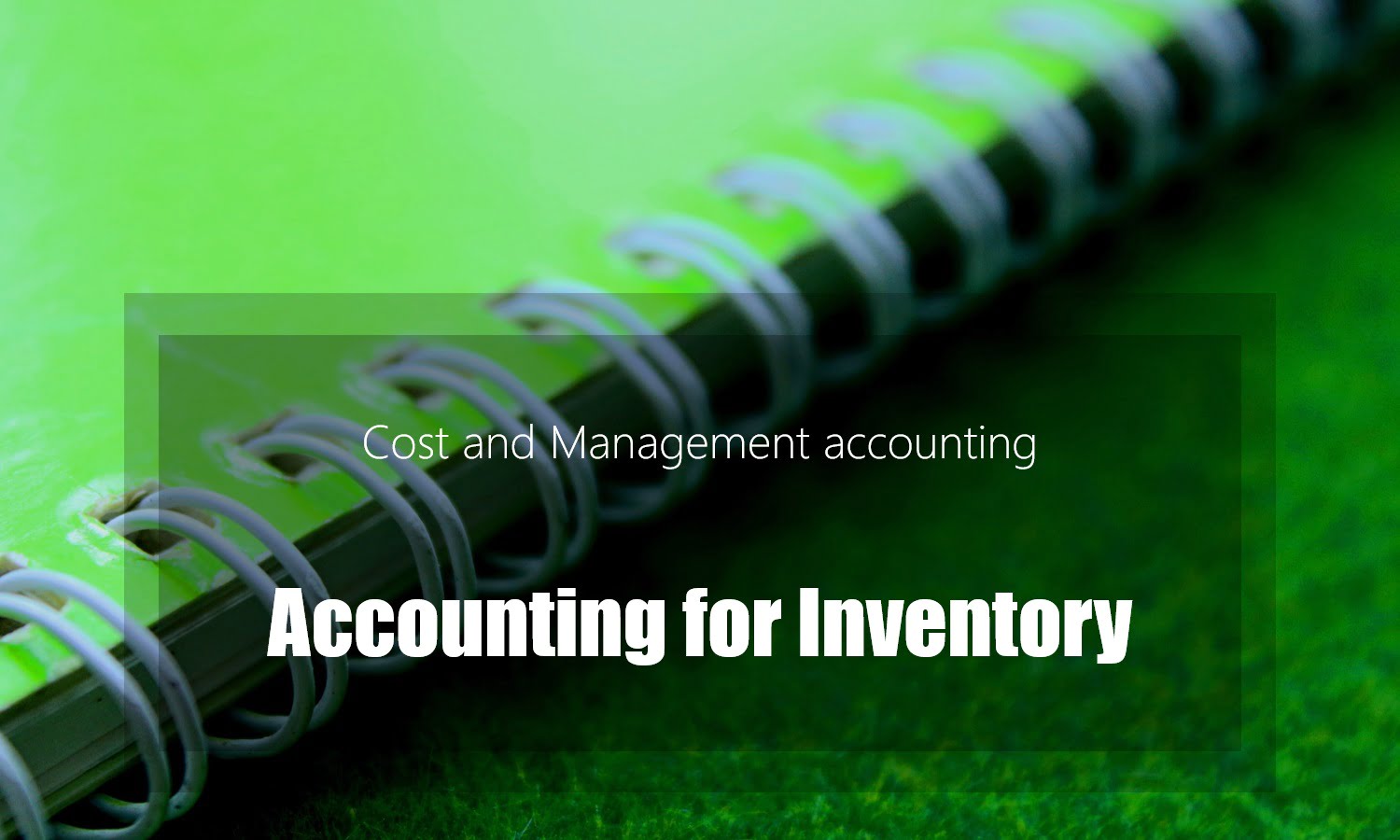Read more
- Introduction to Cost and Management Accounting
- High/Low and Linear Regression Analysis
- Inventory Management
- Accounting for Inventory
- Accounting for overheads
- Absorption Costing
- Marginal Costing
- Job Batch and Service costing
- Process Costing
- Target Costing
- Variances
- Standard Costing
- Cost Volume Profit analysis
- Relevant costing and Decision-Making Techniques
- Time Value of Money (TVM)
Accounting for Inventory Overview
Inventory costing methods
There are two methods of recording inventory (Inventory accounting):
- Periodic inventory method/period end system
- Perpetual inventory system
Each method uses a ledger account for inventory but these have different roles.
Methods for Recording Inventory
Methods for recording Inventory

Periodic inventory method
This system is base on the use of two ledger accounts:
Purchase Account:
It is used to record all purchases during the year. the balance on purchase account is transferred to cost of sales, clearing the purchases account to zero.
Inventory Account:
- It is used to record value of inventory at the beginning/end of the year.
- Opening inventory is last year’s unused purchases.
In cost accounting system:
- A separate record is kept for each inventory item, in an inventory account. There is no purchase account.
- Inventory account is used to record all purchases and other costs associated with inventory and all issue/transfers out of inventory. These transfers might be into work in progress(if inventory account is for raw material) or cost of sales (if inventory account is for finished goods).
- Each issue/transfers are given a cost. This is the actual cost or cost obtained from valuation method (i,e FIFO/AVCO method).
With perpetual inventory account any time the balance on inventory account is the value of inventory currently held.
Summary of journal entries under Perpetual accounting and Period end system
| Particular | Perpetual Inventory method | Periodic Inventory method |
| Opening inventory | Closing inventory as brought forward from last period. | Closing balance on the inventory account at the end of previous period. |
| Purchase of inventory | Purchases Debit Payable/cash Credit |
Inventory Debit Payable/cash Credit |
| Freight paid | Carriage inwards Debit Payable/cash Credit (NO ENTRY IN PURCHASE A/C) |
Inventory Debit Payable/cash Credit |
| Return of inventory to supplier | Payable Debit Purchase returns Credit (NO ENTRY IN PURCHASE A/C) |
Payable Debit Inventory Credit |
| Sale of inventory | Receivables Debit Sales Credit (NO ENTRY IN PURCHASE A/C) |
Receivables Debit Sales Credit AND Cost of goods sold Dr. Inventory Cr. |
| Return of goods by a customer | Sales returns Debit Receivables Credit (NO ENTRY IN PURCHASE A/C) |
Sales returns Debit Receivables Credit AND Inventory Dr. Cost of goods sold Cr. |
| Issue of Inventory | (NO ENTRY IN PURCHASE A/C) | WIP Debit Inventory Credit |
| Return of unused inventory from production | (NO ENTRY IN PURCHASE A/C) | Inventory Debit WIP Credit |
| Normal loss | (NO ENTRY IN PURCHASE A/C) | Cost of goods sold Dr. Inventory Cr. |
| Abnormal loss | Abnormal loss Debit Purchases Credit |
Abnormal loss Debit Inventory Credit |
| Closing Inventory | SOFP Dr. Cost of good sold Cr. |
Balance on Inventory account (subject to physical count). |
Accounting for Inventory: Inventory Valuation
Basic Rule:
Inventory must be measured at lower of;
- Cost; or
- Net realizable value (NRV)
It would be impossible to identify the actual cost for all inventory items because of the large numbers of such items.
Therefore, cost formulas are used for determining cost of group of similar items.
The following cost formulas are used:
- Large and expensive items are readily recognizable but cost of similar items are impossible to identify.
- To establish the cost of inventory using first in first out inventory method (FIFO) it is necessary to record:
| Received | Issued | ||||
| Date | Units | Price | Date | Units | Price |
- This approach assumes that the first inventory sold is always the inventory bought earliest date.
This means closing inventory is always assumed to be the most recent purchase.
Weighted Average cost (AVCO)
- This approach assumes that all units are issued at the current weighted average cost per unit.
- A new average cost is calculated whenever more items are purchased and received in stores as:
Cost in store + New items cost
No. of units in stores + New units
Costing of Issues from inventory and Inflation
As a general rule, during a period of high inflation the different methods of inventory valuation will give significantly different values for cost of sales and closing inventory.
- With FIFO during a period of high inflation cost of sales will be lower than current replacement cost of materials used and the closing inventory should be close to current value, since they are the units bought most recently.
- The inverse is also correct when prices are falling.
With AVCO during a period of high inflation, the cost of sales will be higher and value of closing inventory lower than FIFO valuation.
Accounting for inventory
Inventory costing methods pdf
The above accounting for inventory notes are most simplified version. Moreover, click here to Download the accounting for inventory pdf summary


Leave a Reply
You must be logged in to post a comment.